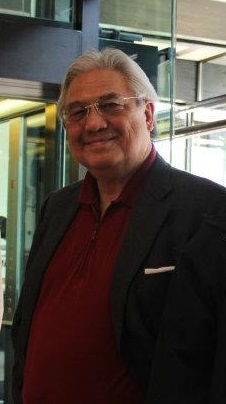SPEECH BEFORE THE STUDENT BODY RIZAL MEMORIAL COLLEGES

By: Lito C. Lorenzana | October 3, 2013
President at Centrist Democracy Political Institute
1Loves.
0Comments.
0People boxed this.
I Introduction In most fora, I normally start my talk with an explanation of who we are, what we are and why we are here. You, being students in a reputable school and centered in Metro Davao, you are no doubt fully aware now of the raging issues of the day – unable to escape the daily bombardment by countless broadsheets, tabloids, the internet, TV and radio.
On the other hand, by being so close to the trees, sometimes we miss the forest. I shall therefore supplement your information perchance by way of updates.
We are members of a 15 person Charter Change Advocacy Commission (ADCOM), an offshoot of the 55 person Constitutional Consultative Commission (CONCOM), created under two separate Executive Orders: so therefore to paraphrase, St. Thomas Moore, we are the President’s men and women – but the country’s first.
II Predicate for Charter Change Let me first lay the predicate for today’s symposium. These are the basic questions which over several months, our people have grappled with and through this raging debate, some have come to terms:
1. The Philippines after the 2nd World War was second only to Japan per capita. In 60 years, we either grew very slowly or even deteriorated compared to our neighbors. To quote one of the Philippine’s leading entrepreneur, John Gokongwei…â€We had the same per capita as Thailand 20 years ago, now they are 2 and ½ x bigger than us. Malaysia is 4 x bigger than us and Indonesia, which had ½ our per capita then, is now our equal. In 5 to 6 yrs, …Vietnam will match or even surpass us…â€; 2. The Consultative Commission (ConCom) of last year, and countless other groups, including Multilateral agencies, including the opposition and more importantly, the great masses of the Pilipinos, came to the conclusion that Changes in our lives are necessary – and these have to do with our Constitution; and 3. Political stability is an imperative if we need to make sustainable economic changes.
III The Constitutional Reforms pushed by Adcom
From the ConCom last year, three basic Constitutional Reforms surfaced: 1. The need to Shift from the inward looking and protectionist economic policies to a liberalized economy. Unlike in our very progressive neighbors like China, Singapore, Malaysia, Thailand and India, our constitution and laws impose unreasonable restrictions on foreign investments and participation that prevent the entry of badly needed capital, technology and knowledge. We are thus far left behind our neighbors in development and prosperity; and 2. Our highly centralized unitary structure of government is dominated by the national gov’t in “Imperial Manilaâ€. Most local governments (LGUs) have remained weak and dependent on national decisions of national officials and offices especially on the release of their share of the Internal Revenue Allotment (IRA). Local and regional development and self-reliance are stifled by this system of central domination and regulation. There is clearly the need to shift from a unitary centralized structure to a Federal system through the emergence of truly autonomous regions.
IV Parliamentary System of Gov’t
Under the present Bicameral Presidential System, which we have now, there has been not only of late, a recurring paralysis, the endless conflicts and gridlocks among and between the President, the Senate and the House of Representatives. Without responsible and program-oriented political parties that unite the leaders of government and the leaders of the opposition, our brand of politics became such a highly personalized affair marked by selfish opportunism and patronage and prone to corruption. Clearly we need to shift from a presidential to a parliamentary form of government, fusing both the legislative and the executive in one body.
I will discuss the details of this topic.
Features:
1. Presidential (Pres) Separation of 3 branches, Executive, Legislative and Judiciary 2. Parliamentary (Parl), fusion of Executive and Legislative branch; also known as Party Government;
Head:
1. Pres – President, Speaker of the House (lower house), President of the Senate (upper house) 2. Parl – President (Head of State) is elected by the Parliament, is ceremonial, no political powers and resigns membership in parliament after election. Speaker/Senate President is abolished and Prime Minister (PM), elected by Members of Parliament (MPs). PM is Head of Government and appoints his cabinet, ¾ of which must come from MPs (1/4 comes from outside of Parliament but become members when sitting as head of Ministries).
Checks & Balances:
1. Pres – Checks and balances result in Gridlocks producing paralysis in governance 2. Parl – Opposition members act as “Shadow Gov’t†to the party in power. The regular “question hour†gives opposition the chance to check on the majority party’s performance. The Judiciary retains power of judicial review.
Effects/Consequences of Separation of Powers & Checks and Balances:
1. Pres – Intense rivalry/competition for power among branches of gov’t, between Senate v/s President and between Senate v/s House of Reps, resulting in Gridlock and Impasse…further resulting into failure of gov’t to move forward to achieve its programs. Last year only 8 major laws were passed. Congress passed 308 bills, 20 major bills of economic reforms – Senate did not act on them – including 2006 budget. (Not passed…bills encouraging development of bio-fuels, relief to low income taxpayers, electoral reform bill and the anti-terrorism bill. 2. Parl – Fusion of Executive and Legislative eliminates gridlock…and results in more coordinated efficient and effective exercise of legislative and executive powers. The needed laws to implement programs are passed with greater ease and lesser expense
Responsiveness/Accountability of Public Officials:
1. Pres – Fixed terms result in officials not caring until election time and blame easily passed from one branch to another. Impeachment of President and Constitutional Officials politically bloody and almost impossible. 2. Parl – Much more sensitive to public since terms will depend also on performance. PM can be removed by Vote of No Confidence, and Parliament can be dissolved for unsatisfactory performance.
Nature of Elections and their effects:
1. Pres – Costly nationwide elections of President, VP and Senators breed corruption, as the candidates must be sponsored by vestige interests. Chances are popular persons (regardless of qualifications) are elected. Candidates are first pre-selected by the elite – then masses are asked to elect. 2. Parl – All elections are local and less expensive. Persons known in the district and communities to be competent and have a heart for public service stand better chance of election to office.
Main Feature of Elections
1. Pres – Personality based elections 2. Parl – Party platform and ideology based; gov’t subsidizes party elections based on votes cast; and proportional representation assures election of good but non-popular public servants.
There are still countless features of the advantages of the Parliamentary system over the presidential. I will refer you to your primers.
V. Conclusion: Today, we are nearing the climax of the decades old battle to restructure society through Charter Change. Because of the recalcitrance of the Senate, the two constitutionally mandated modes changing the charter have been effectively closed to us.
The people have decided to employ the 3rd but seemingly inadequate mode – People’s Initiative. To date, we have 10 million Filipinos who have decided to directly assume responsibility for amending the Charter. This is unprecedented in the political history of our people.
It has also re-energized a small but powerful and influential minority to contest the people’s will. These are the same individuals who are engaged in a political dialogue with only one argument – from the very start – that the President must go. It is logical for them that she must go, because the president, through her advocacy for charter change, has allied herself with the masses of our people and has broken the tenets of her class.
The battle is joined.
Thank you and good afternoon!
- More From this Author
- Comments








